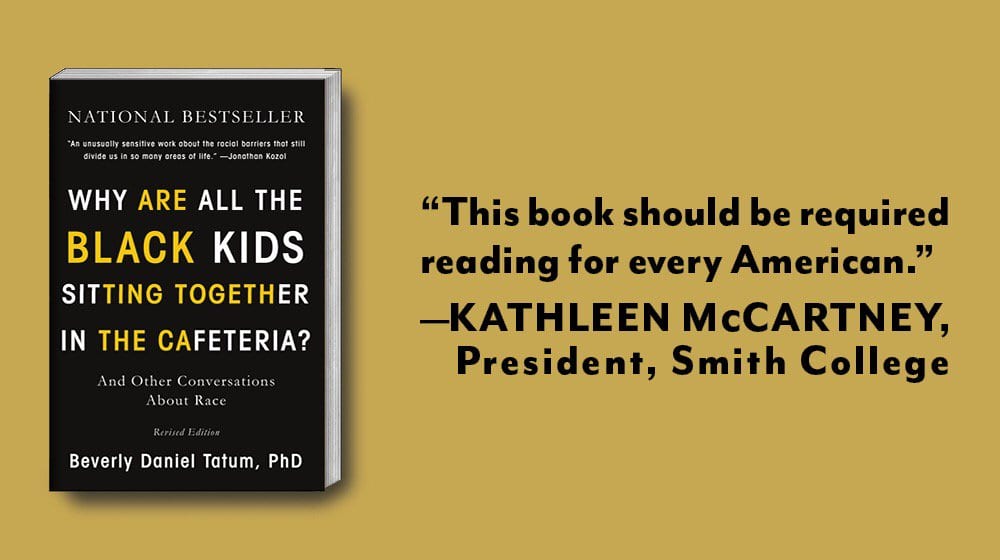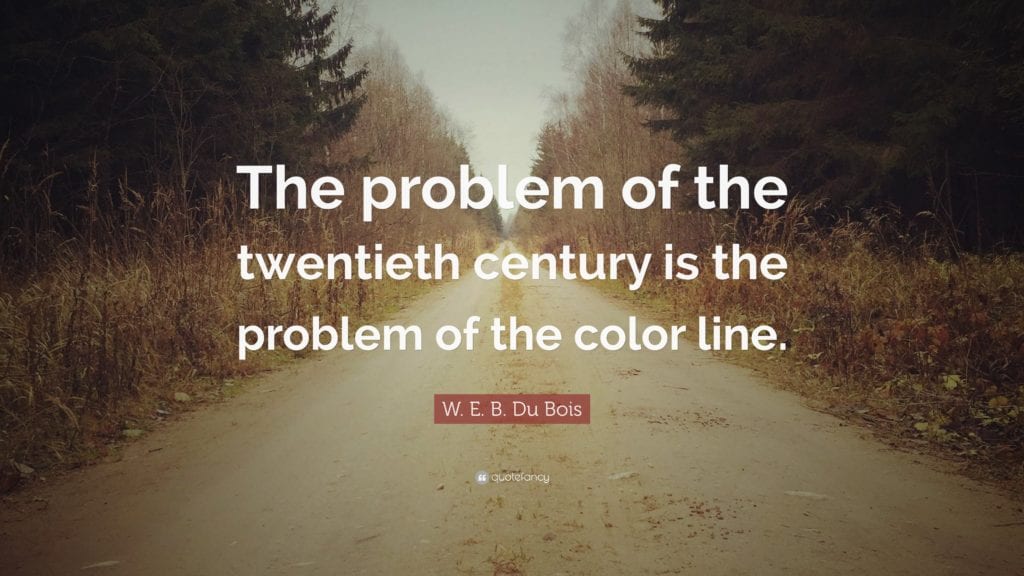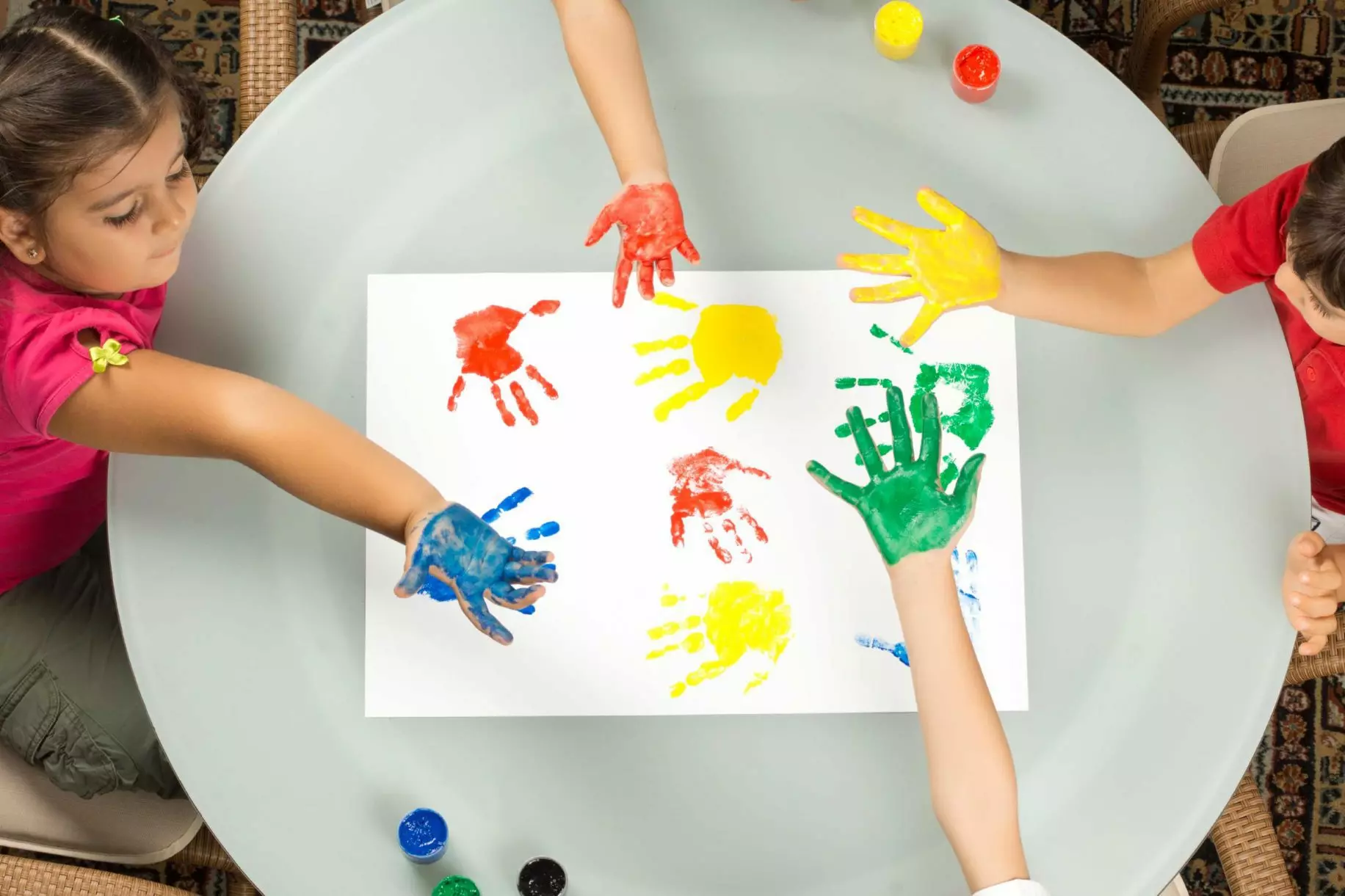
Earlier this month, Dr. Beverly Tatum just released a 20th-anniversary version of her ground-breaking and well-informed book Why are all the Black kids sitting together in the cafeteria: And other conversations about race. She discusses the phenomenon at Michigan’s National Center for Institutional Diversity. This is a topic I think about a lot as the mother of a Black child.
In my son’s small, private, predominantly White school, I noticed that in his grade particularly all the Black students are in one classroom and all the East Indian students are in another classroom which are the two major non-White groups at his school. This got me thinking. School has begun and at public and private schools – elementary through high school – the Black students, the Latino students, the Asian students, etc. are probably sitting together in the cafeteria as I write this. And on that note, so are the band students, the drama students, the athletes, and so on…AND here are some reasons why school social workers, teachers, or administrators should NOT be concerned.
Yes, they are sitting together and it is o.k. We like to sit, play, live, and work with people who make us feel safe and comfortable and the fact is, that is often people who look like us. If I spend all morning and all afternoon in situations that make me feel unsafe and/or uncomfortable or with people who are different than me and I am the minority in numbers, then I want to be able to share a meal (a sacred joyful time in many households) with people who make me safe and comfortable.
Coming to a bookstore near you on Tuesday, 9/5 or you can preorder it now! pic.twitter.com/D5qFiU9otC
— Beverly Daniel Tatum (@BDTSpelman) September 1, 2017
Usually, this means being with people with whom I share some values and beliefs based on our identity. We have to remember that students, particularly those in middle and high school, are figuring out their multiple identities and how those identities intersect. Students are navigating a complex world both internally and externally. To help promote student wellness, let the girls sit with the girls and the drama students sit with the drama students and the Black students sit with the Black students…if they want.
Now, this does not mean that you should tolerate purposeful exclusion, discrimination, or mocking, but rather accept that students (like adults) need to create their own safe spaces. AND you and your colleagues should think about how you can systematically and intentionally create spaces for cross-cultural dialogue that may bridge any gaps at lunch tables or on playgrounds.
Forcing students to sit together in some orchestrated inclusion situation will always back-fire. Let it happen organically. You cannot force people to like each other just because it is a rule in a student handbook. Rather, you can teach students to talk to one another and to hear each other’s stories. You can create spaces and facilitate times for dialogues and learning. Cultural competency is a value and a skill that should be integrated into our schools’ academic curriculum and co-curricular activities.
The dialogues about this should be ongoing. Cultural competence should be reflected throughout every aspect of our schools. Students may still choose to sit together by identity group and with ongoing dialogues, but there will be more awareness and understanding of why. Have you paid attention to what the students’ other needs are? The Brookings Institute estimates that 1 in 6 children come from food insecure household. Add to that the fact that at least half of our school-aged children have a mental health need. And these are just two examples of need.
Our students have a multitude of needs and obstacles that need addressing before we can even get them to attend to sitting and playing together. If a student is struggling at home, in their personal life and space, it is even more challenging for them to be ready to discuss and embrace sitting with people different than them. A student may be worried about what others know and think of their situation. Or, a student may be too distressed to attend to their neighbor. Just think of Maslow’s Hierarchy of Needs – individuals need food, shelter, safety – basic necessities before they can begin to think about and get situated in belongingness and love for others.

The guilt or discomfort we may feel about students sitting together based on identity groups or shared interests has nothing to do with them. No matter how you, myself, or our peers feel about race relations or interacting with groups of different social identities is not how the children of the 21st century feel.
Not a scientific study with proven significance, but still worthy of mention, Good Morning America has done a series called “Black and White,” in which Diane Sawyer and Robin Roberts interview children about their thoughts and feelings about race. When Roberts asked them if their different skin color makes them different from each other the children answered in unison “No.”
We should not place our expectations, guilt, hurt, anger, etc. on them. Students have their own emotions to deal with as it relates to equity, inclusion, and social justice. They don’t even always use the same language to describe it. We need to see them and hear them and let them develop their own space and ways of facing race relations in the 21st century.
Inter-racial friendships may be challenging for some kids to form as Nadra Kareem Nittle points out in her article “Why Interracial relationships are Rare Among Children and Adults“. Children, especially young people, are navigating their own identities and navigating someone else’s adds some sort of pressure or complication to their lives. When your school begins to create a cultural competency plan, include the students and the parents.
Diversity work in schools and anywhere is best done when it becomes part of the integrated fabric of the school and is not just an add-on 1 day or 1-semester program. If you want the students to sit together in the cafeteria or anywhere else, then the school needs to have an ongoing, comprehensive, effective, and impactful plan that begins on day 1 and never ends. The National Education Association has great resources that schools can utilize as a starting place.
Teaching for Tolerance is another resource to find culturally competent and relevant educational information. Remember too that cultural competence needs to be shown in who is hired at the school and who holds leadership positions. Diversity and cultural competence need to be seen in photos, posters, and textbooks year-round. And parents and guardians (as extensions of the schools) need to also have the tools to facilitate such conversations at home and with their families.
So, I am okay with the fact that my son is in the same classroom with the other 3 Black students in his grade. I know that he has always played and sat with all the children in his school, and vice-versa. In reconsidering our concerns about all of the Black children sitting together, social workers should help teachers figure out why this is or is not okay for each child, and administrators should think about what will work best for each school’s culture.

The famous Black scholar W.E.B. Du Boise wrote that the “problem of the twentieth century is the problem of the color line.” It is now the 21st-century and we should ask ourselves what are we doing if this problem still exists? We also need to think beyond the dichotomy of the Black and White binary and make sure we pay attention to the diversity and intersectionality within our schools and neighborhoods and speak to that specifically, and not just speak to Black and White students.
In the coming decades, the population of our country will continue to become increasingly diverse. Soon, we will need to ask ourselves “Why are the White students sitting together in the cafeteria?” And then we must be prepared to answer that question and do something about it.












